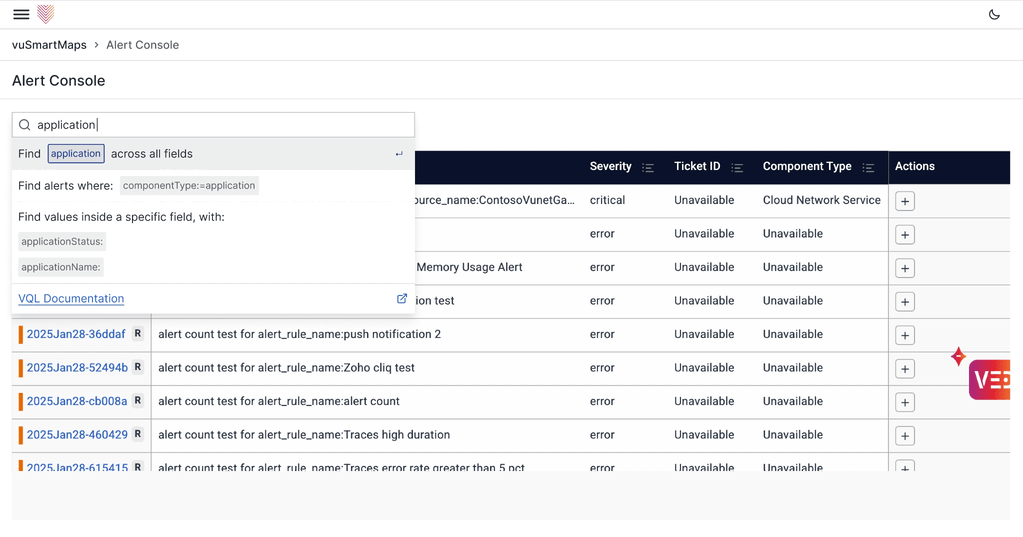


vunet built vusmartmaps — an observability platform that financial institutions use to identify, diagnose, and resolve errors across their distributed components. in 2025, i was hired as a design-consultant, to work on ambiguous asks.
while the product was complex, and comprised many modules, there were only two types of distinct pages where people consumed information — listing-pages (with cards, panels, et-cetera), and table-pages (with many rows & columns).


in both cases, finding a specific item was laborious. there was a search-bar, but it only allowed people to perform keyword searches.

to facilitate more complex searches on pages with tables, vunet had built its own query-language (vql). this allowed people to write functions & expressions to find specific items across loads of entries. however, using vql assumed an understanding of the language & its syntax, which only 'advanced-users' were expected to have. therefore, the ability to write vql queries was limited to specific pages.

so, i proposed a contextually-aware search-bar, that could be deployed across different pages on the platform, helping people find specific items quicker. the idea was to help people:




i accounted for all possible keyboard-triggers (and the resulting suggestions), error resolution (if people were syntactically incorrect), and left room in the design for the query-language to grow in the future.
to demonstrate digital-tactility and technical-feasibility*, i also built a javascript-prototype.